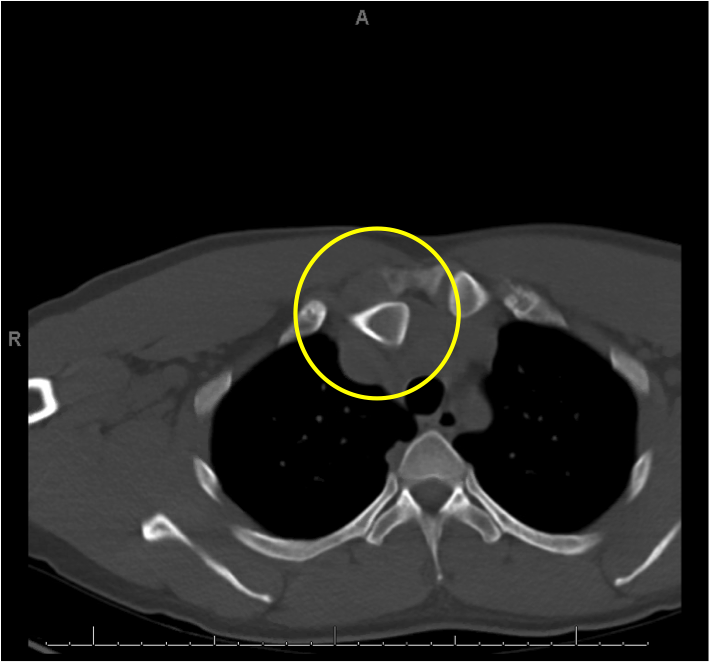Bony Thorax Case 2 History/Physical Exam
Most patients with a sternoclavicular joint dislocation will present after a high impact injury. For both anterior and posterior dislocations, the patient may present with chest pain adjacent to the sternum that worsens with arm abduction and elevation. The affected arm will likely be flexed at the elbow and supported by the other arm to prevent movement. The head may be turned toward the affected side to prevent the pull of the sternocleidomastoid muscle.
For an anterior dislocation, there is typically palpable tender deformity adjacent to the sternum. In a posterior dislocation, presenting symptoms may be related to the mediastinal structure that is being affected. For example, patients may present with hoarseness, stridor, dyspnea, dysphagia, decreased distal pulses, or paresthesias in the ipsilateral upper extremity that worsen when supine.
